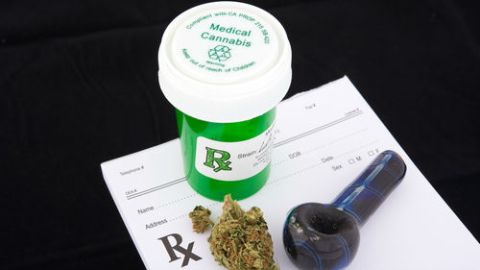Reefer Madness: It’s Time For a Logical Policy on Marijuana

What’s the Big Idea?
The legal status of medical marijuana in the United States is very hazy these days. 16 states plus the District of Columbia allow the use of medical marijuana, but there is a great discrepancy as to who is allowed to smoke it and how much they are allowed to possess. 17 other states have pending legislation that promises to add to the chaos. Then there is the federal government, whose policy represents “one incongruity after another,” according to Dr. J. Michael Bostwick, Professor of Psychiatry at Mayo Clinic in Rochester, Minnesota.
Professor Bostwick has spent a year researching what he calls a “think piece” that was recently published in the February, 2012 issue of Mayo Clinic Proceedings. Bostwick’s article points out that Marijuana is unique among illegal drugs due to its political symbolism and widespread use, which has prevented a thoughtful analysis of its perceived value versus its perceived danger.
Marijuana is currently classified as a Schedule 1 agent under the federal Controlled Substances Act. This classification means marijuana has “high abuse potential” and no “currently accepted medical use.” When this declaration was made in 1970, the decision was based more on a Depression era Reefer Madness-esq mix of superstition and propaganda than it was on rigorous scientific evaluation.
Cannabis propaganda sheet from 1935
What has followed is “40 years of not thinking about it very much,” Bostwick told Big Think in a telephone interview. And yet the science over the last several decades has rendered the current classification of marijuana completely obsolete. It was not until the 1990s, Bostwick notes, that “the far-reaching modulatory activities of the endocannabinoid system” were appreciated, and with that, “the possibility of many pharmaceutical applications.”
And yet, just as public opinion drove draconian federal regulations that put a damper on research in 1970, “medicine by popular vote” is currently driving medical marijuana legislation today, absent the scientific data “normally required to justify a new medication’s introduction.”
As a physician, Bostwick is equally concerned with the “complex mental health implications” for marijuana use. While the hypothesis that marijuana can cause psychosis is unresolved, Bostwick shows there is mounting evidence that the drug “worsens the course of psychotic illness.”
In other words, there are both risks and potential benefits associated with marijuana use. When there is evidence that a drug is helpful, researchers tend to study it. And yet, according to Bostwick, “it is almost impossible to submit a request” to study marijuana. Thanks to federal restrictions that hamstring research,” Bostwick argues, “opportunities to further study marijuana’s risks and benefits and develop new pharmacotherapies are squandered.”
Bostwick, along with a number of Governors and groups such as the American Medical Association, calls for a reclassification of marijuana as a Schedule II controlled substance. Bostwick says this reclassification would “acknowledge not only [marijuana’s] abuse risks but also its therapeutic benefits.” This would allow pharmaceutical companies to petition the FDA for the right to put the drug “through a battery of tests in animals and humans that ensure the drug’s benefits outweigh its risks.”
What’s the Significance?
Bostwick says reclassification of marijuana would probably create “a softening of the obstructionism at the federal level.” And yet, such an action seems unlikely given the “federal gridlock” that exists among agencies that often contradict each other. The result of this bureaucratic failure is “the federal government thumbs an illogical nose at contemporary public sentiment, recent scientific discoveries, and potentially head-to-toe therapeutic breakthroughs,” Bostwick writes.
So if current regulations remain unchanged, marijuana research — as is the case in so many other areas of study — will simply go overseas.
On the other hand, I asked Bostwick how the scientific study of marijuana has progressed as far as it has given the current prohibitions? After all, Bostwick’s Mayo Clinic article contains 112 citations, which amounts to a major body of work in this area. Despite federal law putting a damper on research, Bostwick says some basic science can still be done.
And yet, what he says we need most of all is “an environment where scientists are not afraid” of harassment from the government. At the very least, we need a more “logical environment” in which state and federal regulations aren’t contradicting one another.
Image courtesy of Shutterstock
Follow Daniel Honan on Twitter @Daniel Honan





